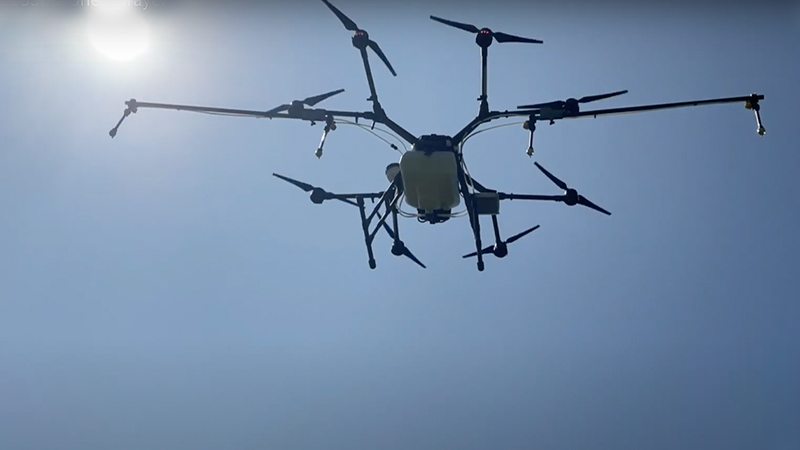
There was a day not that long ago when machines that required minimal human supervision and interaction were little more than an intriguing sideshow on tradeshow floors. Autonomous mowers attracted curious onlookers who admitted to being interested but dismissed the technology as "interesting, but it's not for me." And drone technology for anything other than shooting cool photos or videos was a pipe dream.
No more.
Since Covid launched the country, not just the golf business, into a nationwide labor crisis, superintendents, restaurant owners and grocery store managers alike are looking for new ways to conduct business day to day.
"Covid has changed everything. It has enhanced everything," said Alan FitzGerald of LedgeRock Golf Club in Mohnton, Pennsylvania. "It has really enhanced generational changes."
Ken Rost, principal of Frost Inc., recently has been tinkering with spray applications on golf courses and farm fields.
He is starting to get clients in the golf industry who have areas that are hard to reach on foot, who do not have enough help or both.
"The two areas we get requests for are aquatics, spraying for duckweed, and native areas for noxious broadleaf weeds competing with native grassy areas," Rost said.
The biggest challenge for operators is securing all the licenses and permits, which, Rost said, can run three to six months.
Set up and flying on site is a much easier process, and operators can do in a matter of minutes tasks that one, two or more people a day or more to complete.
FitzGerald has about 60 acres of managed native areas at LedgeRock, much of which is on hard-to-reach slopes. He recalls looking at a steeply sloped area and coming to the realization that there had to be an easier way to manage those areas than going in on foot.
"I stared at it and wondered how I could mow or spray it without mowing or spraying it," FitzGerald said.
"What would take an entire day or day-and-a-half to do by hand is done in less than an hour by drone."
Kevin Clunis has used drone spraying services on an occasion or two at Luck Golf Club in the Twin Cities area of Minnesota, but does not use it on a regular basis.
"I don't think it will ever replace spraying by hand," Clunis said. "But it can help."
Among the barriers to widespread use can be cost and at Luck are trees.
When drones get too close to a tre, the vehicle's obstacle-awareness system stops the craft. Likewise, set up and use can cost the end user up to $200 an hour.
Superintendents with specific need areas, those with labor challenges or both view that rate as a bargain.
"They say they don't care about the cost because they can't get to the area, or they don't have enough people," Rost said. "They just say 'get it done.' "
FitzGerald does not view the cost as much as he does the benefit.
"It's a safety issue getting in those areas, and it takes more guys to get it done, who we don't have," FitzGerald said. "There are massive savings to be had there."


